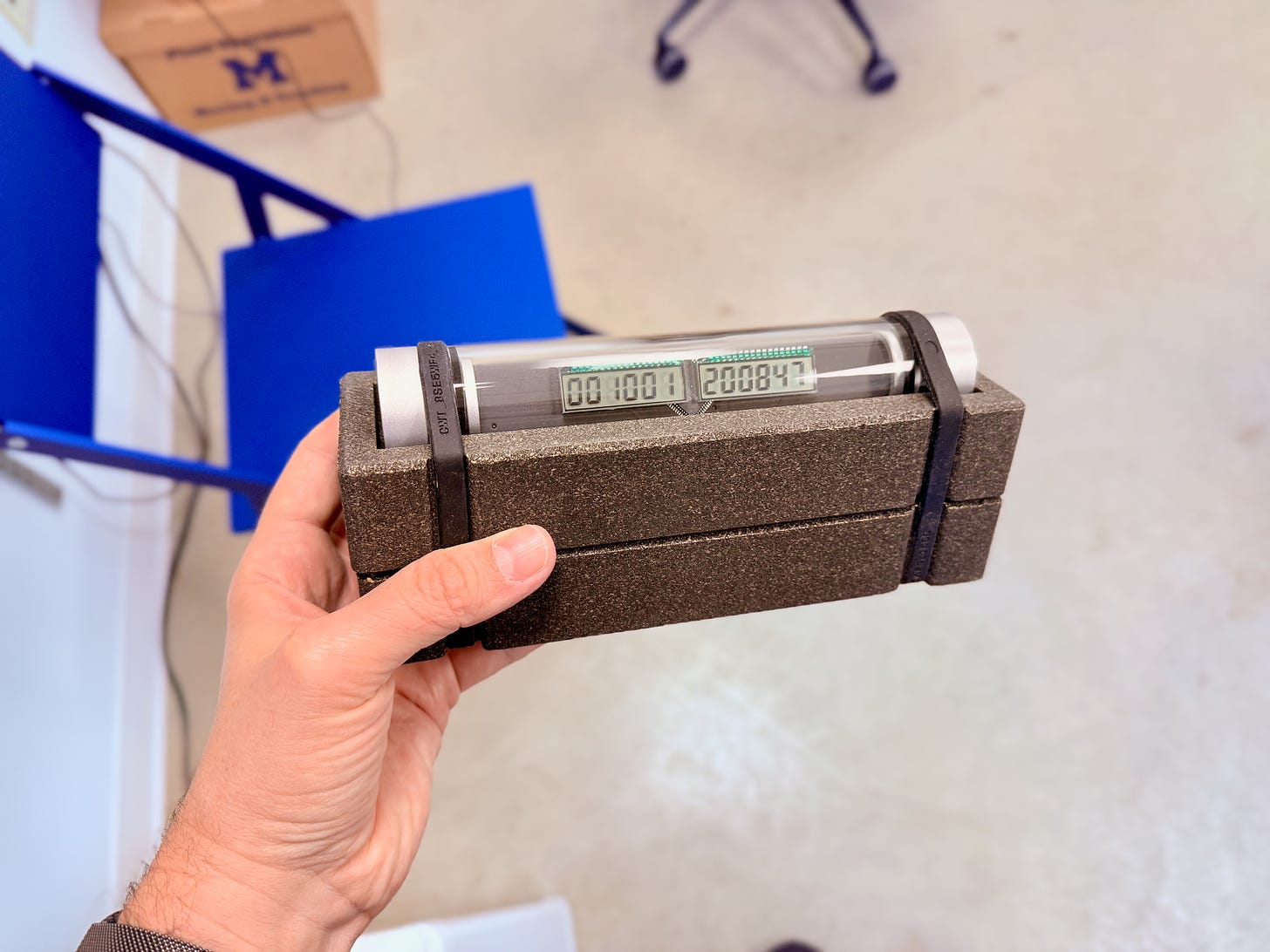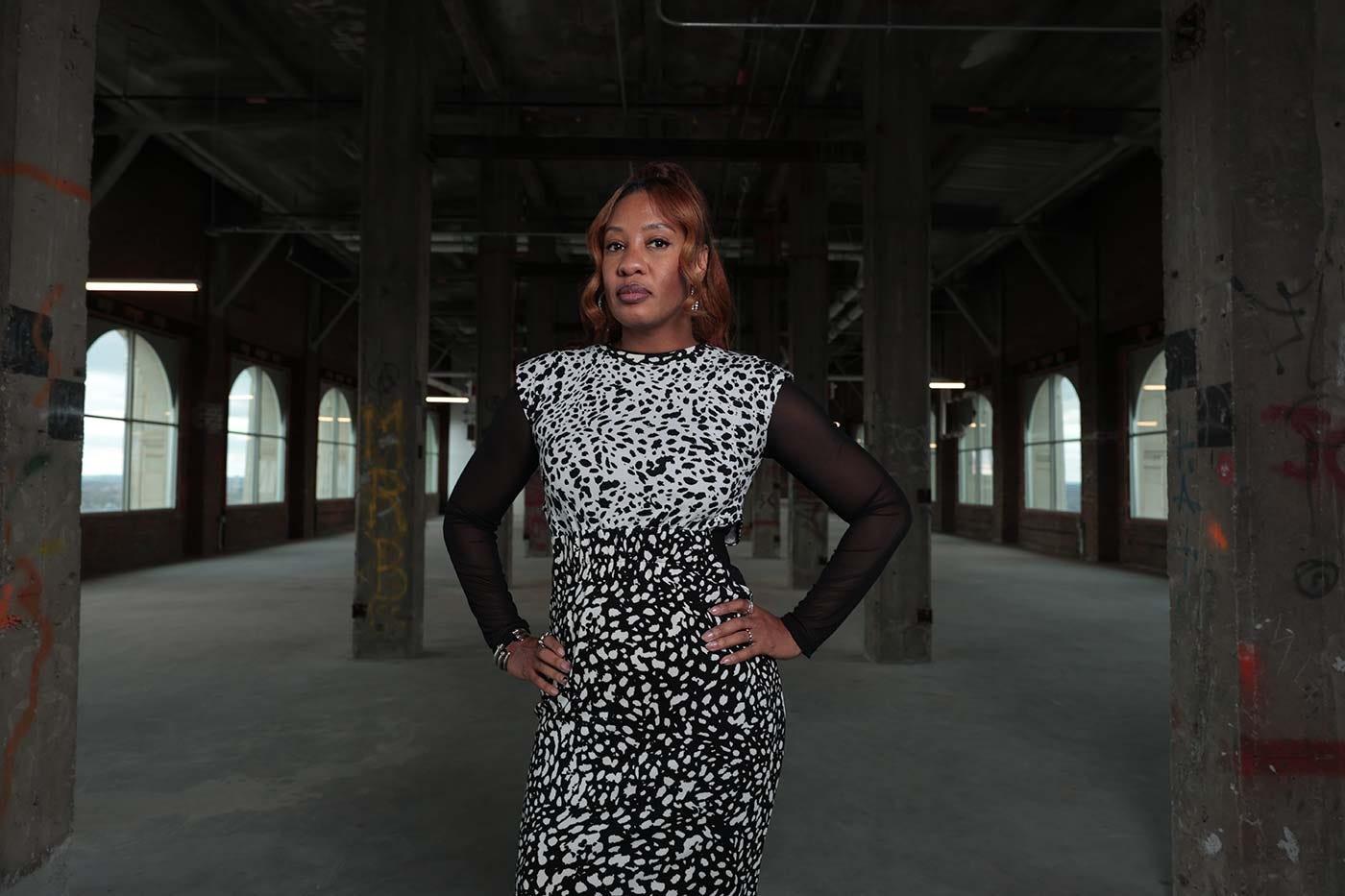Urban Technology at University of Michigan week 219
Interview with Clarinda Barnett-Harrison and celebrating 1,000 days of UT
Here in the middle of the semester the flutter of papers and projects are echoed by a flutter of leaves outside. We welcomed Clarinda Barnett-Harrison as a new faculty member this year, so let’s check in with her and see how she’s thinking about teaching in urban technology and living and working in Detroit. Oh, and we’ve officially passed the 1,000 day mark or this little degree program of ours. 🎉
💬 Hello! This is the newsletter of the Urban Technology program at University of Michigan, in which we explore the ways that data, connectivity, computation, and automation can be harnessed to nurture and improve urban life. If you’re new here, try this short video of current students describing urban technology in their own words or this 90 second explainer video.
⏳ One Thousand Days
On October 2nd we hit 1,000 days since the start of the very first urban technology course at the University of Michigan… but I missed the photo by one day! Has it only been 1,000 days? Has it already been 1,000 days?!
🌇 Hey Clarinda, What do you Teach?
Clarinda Barnett-Harrison (U-M alum 🙌) joined us this year as a lecturer in urban technology. With a career spanning different sectors and plenty of urban planning experience in Detroit, Clarinda brings a keen perspective of how change happens in cities—both theoretically and directly. One of the many things I’m excited about Clarinda bringing to our teaching faculty is a connection to the ecosystem of innovation that’s growing in Detroit that is uniquely focused on diversity of founders, “hard tech” challenges (a near synonym for urban technology), and co-creation with community. Music to our ears here in UT@U-M.
Clarinda previously served as the senior director of Economic Prosperity and executive director of the Detroit Regional Workforce Fund at the United Way for Southeastern Michigan, where she developed the strategic path forward for economic mobility initiatives throughout the region. Prior to that role, she was the executive director of Business and Foundation Engagement and the director of the Business Engagement Center at the University of Michigan-Dearborn, allowing her to leverage the university’s talent and intellectual capacity to support companies with economic development efforts across the State of Michigan.
BRYAN BOYER: Can you tell us a bit about the work you do at Michigan Central, and who you are outside the classroom?
CLARINDA BARNETT-HARRISON: At Michigan Central, I lead three interrelated but distinct bodies of work. The first and primary role I play as the head of skills is focusing on cradle-to-career talent development to make sure we have talent with the skills needed to power our innovation ecosystem.
I work closely with our founders and corporate partners to understand the current and emerging skills. Whether it’s in pre-K-12, adult learner, or post-secondary spaces, we ensure we have a circular information loop around what skills are needed, how to activate best in class initiatives already taking place, and where we can, initiate novel programming to meet unmet needs.
The second body of work involves working with the founder ecosystem to ensure underrepresented founders—particularly women and people who identify as Black or Hispanic—have the tools and resources they need to start, scale, and sustain their businesses; particularly in the hard tech or mobility tech space. For instance, I work with organizations like Black Tech Saturdays and Femology to do programming exclusively at Michigan Central for these purposes.
Lastly, I manage all university partnerships. We’re actively engaging all R1 institutions in Michigan, including the University of Michigan and UMCI, to ensure we have robust partnerships across theoretical and applied research, talent engagement and development.
In addition to this, I run a boutique urban planning and design firm in partnership with my husband, who’s also an urban planner, called Planning Tes. There’s a subsidiary of that called The Everyday Sacred, where we focus on thought leadership around global challenges cities face, particularly for individuals who are hardest to serve or most marginalized, and how interventions like access to public space and transportation, safe dwellings, and inclusive design can improve cities.
BRYAN: What do you do with the other 20 hours in the day?
CLARINDA: I sleep if I can!
BRYAN: How do you see the difference between teaching urban planning versus teaching urban technology students?
CLARINDA: As a practitioner for over 20 years, I’ve always appreciated and acknowledged that urban planning skills are applicable across many different areas. I’ve used that discipline to apply my skills in a multitude of ways. I’ve worked in the private sector, for traditional architecture firms, regional governments, nonprofits, academia, and now back in this innovation and technology space, which has brought things full circle for me.
Working at Michigan Central places me at the center of recognizing how traditional levers in cities, like community, government policy, or real estate development, are evolving based on technological interventions. For example, now we have things like transportation innovation zones where we apply technology to city solutions. This wasn’t something we thought about before, but it’s now impacting communities in real ways, whether through data transfer, transparency, or ensuring that information is equitably shared.
And then, when we look at the improvements technology can make—like electrification in mobility—we need to be responsible about ensuring all communities benefit from these improvements, so we don’t perpetuate disparities. This is something we’ve learned from historic technologies, like highways, that shaped cities today.
BRYAN: The course UT201 - Change Making in Cities is set up to compare and contrast different types of power. How are you approaching that?
CLARINDA: First, we’re understanding historical contexts, so we’re grounded in how decisions about cities shape who wins and who loses [for instance in the federal highways program from the middle of the 20th century].
Second, we focus on community as a change agent and how it intersects with government policy, real estate development, and modern technology.
Third, we examine the physical and built environment, particularly real estate and how land use is reallocated. We’ll focus on the Core City community in Detroit, a rapidly developing area where community groups have been active in shaping policy and influencing development.
Lastly, we’ll look at modern technology and its impact on cities. We’ll invite leaders working in the transportation innovation zone, as well as founders involved in technology-based infrastructure projects like JustAir and Airspace Link, to discuss their work. The course culminates with a final project where students apply their learning to the changes they see in cities today.
BRYAN: What’s the most important thing for students to exit this course with?
CLARINDA: I want students, whether they go on to work for the government, nonprofits, or real estate development, to recognize their responsibility as change makers in cities. They need to ensure they’re acting transparently, responsibly, and with a commitment to mitigating harm, because cities are made up of people. The decisions we make as professionals directly affect people’s lives, for better or for worse.
BRYAN: What is your favorite city and why?
CLARINDA: Mexico City. I’ve never been to a city that has the culmination of centuries of development and physical space all converging at once. There's the Aztec pyramids in the middle of the city, in addition to the development of the conquistadors. In Spain, during that time period, there was a lot of North African and Middle Eastern influence in the architecture, and then you have the 20th century architecture of the tall glass buildings, as well as these modern displays of art. It really tests the bounds of what the physical environment can look like as a work of art. Seeing the city and experiencing it on the ground, and being able to do so in a way where it's very pedestrian-friendly was a unique experience for me. It's one of the best cities, the most cultured cities, the most prioritizing of public space cities, that I've ever visited, and I've been to quite a lot of cities.
These weeks: Second of four calls with incoming students. UT330 midterm reviews—with bagels! Approaching phase two of Project Snowfall. New curriculum approved, so its time to operationalize and move forward. Hiring committee is reviewing applications. It’s fall: enjoy the swirl. 🏃




